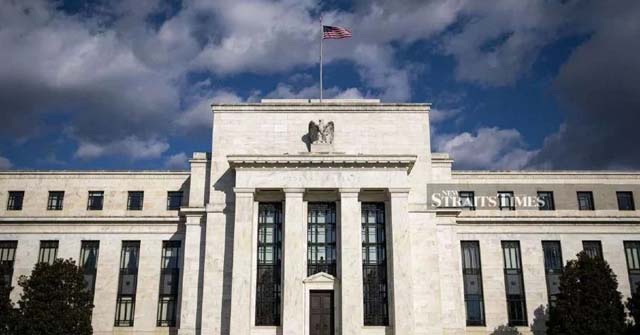
WASHINGTON, May 2, 2024 (BSS/AFP) - The US Federal Reserve on Wednesday held interest rates steady for a sixth straight meeting, keeping the level at a 23-year high to fight stubborn price increases.
After a two-day gathering, the central bank decided unanimously to keep the benchmark lending rate unchanged at 5.25-5.50 percent, citing a "lack of further progress" towards its two percent inflation target.
"The economic outlook is uncertain, and the Committee remains highly attentive to inflation risks," the Fed said in a statement.
For months, the US central bank has held its benchmark lending rate at a high level to cool demand and rein in price increases -- with a slowdown in inflation last year fueling optimism that the first cuts were on the horizon.
But inflation has accelerated, throwing cold water on hopes of an early rate reduction.
The Fed said it does not expect to lower rates until it has "greater confidence" that inflation is moving sustainably towards its target.
Federal Reserve Chair Jerome Powell told a press conference: "It is likely that gaining such greater confidence will take longer than previously expected."
While the central bank is prepared to hold rates steady for as long as appropriate, Powell added that it is "unlikely that the next policy rate move will be a hike."
- Possible cuts? -
The Fed's statement does not significantly change the general outlook that a first rate cut will likely occur in September, said economist Ryan Sweet of Oxford Economics.
This is contingent upon inflation slowing, he added.
While markets see a September cut "as a coin flip," a few good inflation reports could change the narrative, Sweet said.
Wednesday's statement also "contains no hawkish pivot in tone," noted Pantheon Macroeconomics chief economist Ian Shepherdson.
Policymakers instead "provided reassurance" by saying that risks to achieving the Fed's employment and inflation goals have "moved toward better balance," he said.
Analysts believe this means the door remains open to rate cuts in 2024.
The Fed previously penciled in three cuts this year but hotter-than-anticipated inflation has made things less certain.
Shepherdson said, however, that "we see nothing in the statement that will prevent the Fed from pivoting to reducing interest rates multiple times this year" if conditions allow.
Powell also said the Fed is prepared to respond to an "unexpected weakening" in the labor market.
If that market starts to flag, "the Fed could cut rates even with inflation above its two percent goal to keep the jobs expansion going," said Navy Federal Credit Union corporate economist Robert Frick.
- Avoiding politics -
As hope dwindles for rate cuts in the first half of 2024, the Fed faces a growing possibility that eventual reductions will coincide with the run-up to November's presidential election.
This could give the economy a boost while Democrats and Republicans vie to win over voters.
But the converging timeline may prove uncomfortable because the Fed, as the independent US central bank, seeks to avoid any appearance of politicization.
Powell pushed back strongly when asked if the election affects interest rate decisions.
"I can't say it enough: That we just don't go down that road," he said.
Powell pointed to his track record, saying it is his fourth presidential election.
"Read all the transcripts and see if anybody mentions in any way the pending election. It just isn't part of our thinking," he added.
On Friday, Treasury Secretary Janet Yellen is due to stress the importance of strong democratic institutions as well.
"As Chair of the Federal Reserve, I insisted on the Fed's independence and transparency because I believe it matters for financial stability and economic growth," she says in prepared remarks released Wednesday.
A recent Wall Street Journal report said allies of former president Donald Trump are drafting proposals that could erode the Fed's independence if he wins a second term.
- Balance sheet -
On Wednesday, the Fed also announced that from June, it would slow the pace of decline of its securities holdings.
It will reduce the cap on US Treasury securities it allows to mature each month without being replaced from $60 billion to $25 billion.
The cap on how many mortgage-backed securities can roll off its books remained unchanged at $35 billion monthly.
The Fed embarked on a policy of so-called quantitative easing during the pandemic, swelling its balance sheet by buying assets including US Treasury securities to support the economy through economic turmoil.
Since rolling back the policy in 2022, the Fed has steadily reduced its holdings.